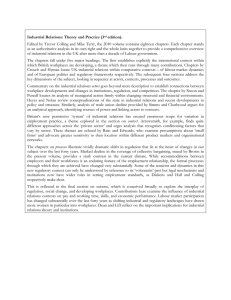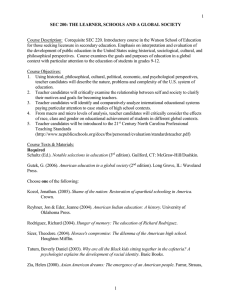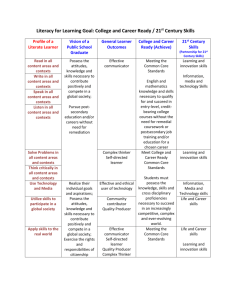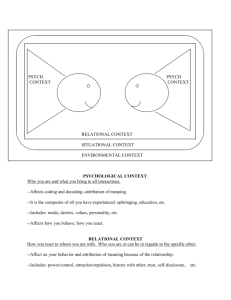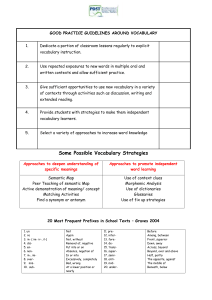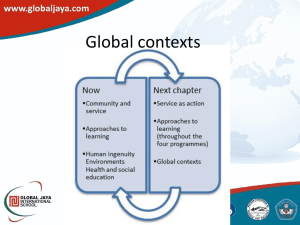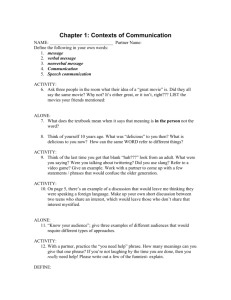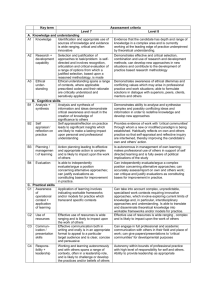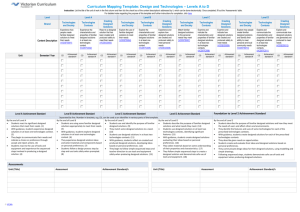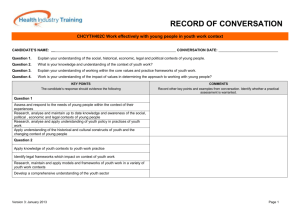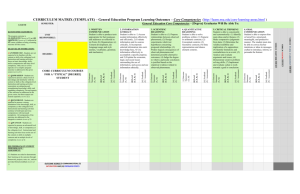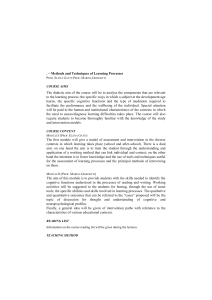Business strategy
advertisement
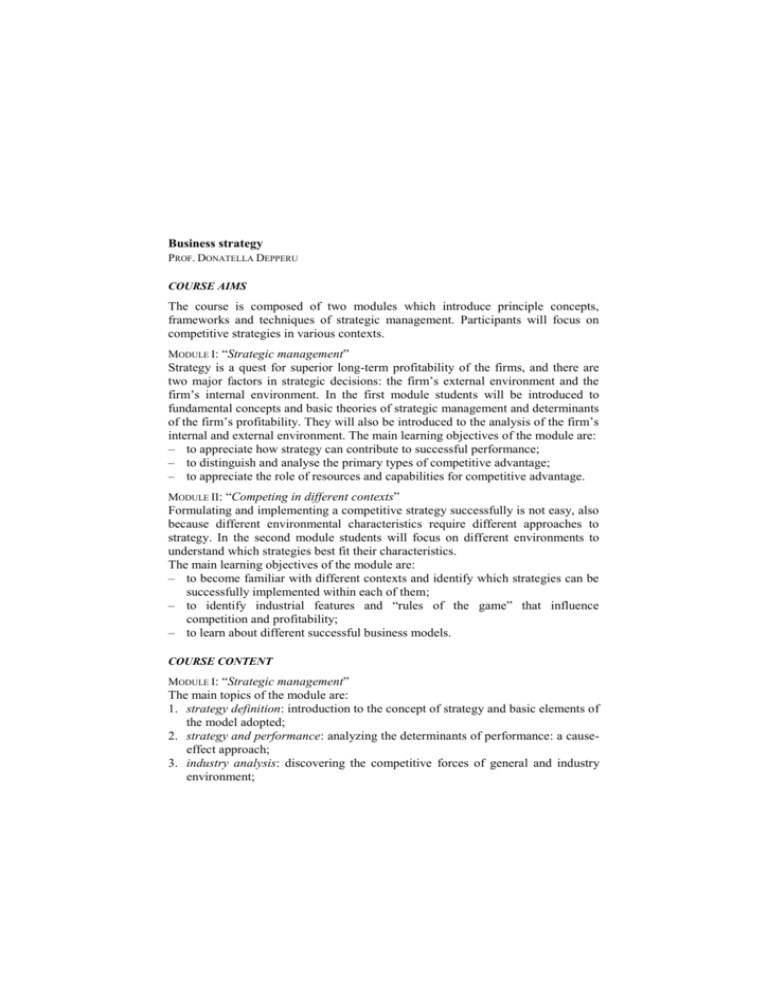
Business strategy PROF. DONATELLA DEPPERU COURSE AIMS The course is composed of two modules which introduce principle concepts, frameworks and techniques of strategic management. Participants will focus on competitive strategies in various contexts. MODULE I: “Strategic management” Strategy is a quest for superior long-term profitability of the firms, and there are two major factors in strategic decisions: the firm’s external environment and the firm’s internal environment. In the first module students will be introduced to fundamental concepts and basic theories of strategic management and determinants of the firm’s profitability. They will also be introduced to the analysis of the firm’s internal and external environment. The main learning objectives of the module are: – to appreciate how strategy can contribute to successful performance; – to distinguish and analyse the primary types of competitive advantage; – to appreciate the role of resources and capabilities for competitive advantage. MODULE II: “Competing in different contexts” Formulating and implementing a competitive strategy successfully is not easy, also because different environmental characteristics require different approaches to strategy. In the second module students will focus on different environments to understand which strategies best fit their characteristics. The main learning objectives of the module are: – to become familiar with different contexts and identify which strategies can be successfully implemented within each of them; – to identify industrial features and “rules of the game” that influence competition and profitability; – to learn about different successful business models. COURSE CONTENT MODULE I: “Strategic management” The main topics of the module are: 1. strategy definition: introduction to the concept of strategy and basic elements of the model adopted; 2. strategy and performance: analyzing the determinants of performance: a causeeffect approach; 3. industry analysis: discovering the competitive forces of general and industry environment; 4. value chain analysis: identifying the activities which create value whitin a firm; 5. offensive and defensive business strategies: selecting how to attack the leader and how to deal with competitive attacks. MODULE II: “Competing in different contexts” In this module participants will focus on competition in different contexts and primarily in: 1. high-tech and technology-based industries; 2. creativity-based industries; 3. mature industries; 4. fragmented industries; 5. the global environment. READING LIST Attending students M. GRANT, Contemporary Strategy Analysis, Wiley, 2013, 8th ed. (chapters 1-10 + 12). Additional readings (in form of articles) and other integrating teaching materials will be handed over in class, particularly during the second module. Not attending students R.M. GRANT, Contemporary Strategy Analysis, Wiley, 2013, 8th ed. (all chapters). R. ADNER, The Wide Lens, Penguin Group, 2013 (all chapters). TEACHING METHOD The course consists of lectures, class discussions of case histories and a project to be developed in small groups. Students are required to actively attend lectures; to discuss business cases or examples of concrete situations; and to deliver presentations in class. ASSESSMENT METHOD The exam is in written form. Assessment may be integrated by group and/or individual work as well as discussion of articles or case studies. The specific modalities will be communicated at the beginning of the course and made available on Blackboard. For students who are not active participants the final grade will be based (100%) on a written final exam (on the whole textbook + the book) to be taken during exam sessions.


